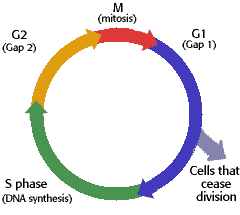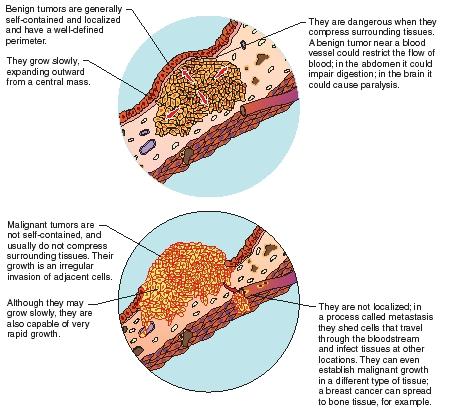Posted By: Pankaj Patel
Cancer staging is the action of free the admeasurement to which a blight has developed by spreading. Contemporary convenance is to accredit a amount from I-IV to a cancer, with I getting an abandoned blight and IV getting a blight which has advance to the absolute of what the appraisal measures. The date about takes into annual the admeasurement of a tumor, how acutely it has penetrated aural the bank of a alveolate agency (intestine, urinary bladder), whether it has invaded adjoining organs, how abounding bounded lymph nodes it has metastasized to (if any), and whether it has advance to abroad organs.
Points:
- Staging systems for cancer have evolved over time and continue to change as scientists learn more about cancer.
- Staging describes the extent or severity of a person’s cancer. Knowing the stage of disease helps the doctor plan treatment and estimate the person’s prognosis.
- Most tumors can be described as stage 0, stage I, stage II, stage III, or stage IV.
- The TNM staging system is based on the extent of the tumor (T), whether cancer cells have spread to nearby (regional) lymph nodes (N), and whether distant (to other parts of the body) metastasis (M) has occurred.
- Physical exams, imaging procedures, laboratory tests, pathology reports, and surgical reports provide information to determine the stage of the cancer.
Staging helps the doctor plan the appropriate treatment. The stage can be used to estimate the person’s prognosis. Staging helps health care providers and researchers exchange information about patients; it also gives them a common terminology for evaluating the results of clinical trials and comparing the results of different trials. Knowing the stage is important in identifying clinical trials that may be suitable for a particular patient. Staging is based on knowledge of the way cancer progresses. Cancer cells grow and divide without control or order, and they do not die when they should. As a result, they often form a mass of tissue called a tumor. As the tumor grows, it can invade nearby tissues and organs. Cancer cells can also break away from the tumor and enter the bloodstream or the lymphatic system. By moving through the bloodstream or lymphatic system, cancer cells can spread from the primary site to lymph nodes or to other organs, where they may form new tumors. The spread of cancer is called metastasis.
Stage
|
Definition
|
|---|---|
| Stage 0 | Carcinoma in situ. |
| Stage I, Stage II, and Stage III | Higher numbers indicate more extensive disease: Larger tumor size and/or spread of the cancer beyond the organ in which it first developed to nearby lymph nodes and/or organs adjacent to the location of the primary tumor. |
| Stage IV | The cancer has spread to another organ(s). |
TNM Staging System
'TNM' stands for Tumour, Node, Metastasis. The TNM system is one of the most widely used staging systems. The TNM system is based on the extent of the tumor (T), the extent of spread to the lymph nodes(N), and the presence of distant metastasis (M). A number is added to each letter to indicate the size or extent of the primary tumor and the extent of cancer spread.
- 'T' refers to the size of the cancer - it can be 1, 2, 3 or 4, with 1 being small and 4 large
- 'N' refers to whether the cancer has spread to the lymph nodes - it can be between 0 (no positive nodes) and 3 (lots of positive nodes)
- 'M' refers to whether the cancer has spread to another part of the body - it can either be 0 (the cancer hasn't spread) or 1 (the cancer has spread)
Sometimes the letters A, B or C are used to further divide
the number categories - for example, stage 3C cervical cancer. As well as T1 -
T4, you can get 'Tis'. This means 'carcinoma in situ', which is a very small and very early stage cancer. It is such an early stage that it is sometimes
called pre-cancer. P is sometimes be used before the letters TNM to mean a
tumour that has been removed by surgery (the stage is based on a 'pathological'
examination of the cells after surgery). So for example, a small cancer that
has spread to the lymph nodes but not to anywhere else in the body may be
T2N1M0. Or a more advanced cancer that has spread may be T4N3M1.
Number Systems:
These usually have a scale of 1 to 4 (or sometimes A to D). '1' typically means a small tumor that has not spread and no positive lymph nodes. '4' would mean that the cancer had spread to other major organs in the body. There is information about staging for each type of cancer in the treatment sections of your cancer type.
The types of tests used for staging depend on the type of cancer
- Physical exams: The doctor examines the body by looking, feeling, and listening for anything unusual. The physical exam may show the location and size of the tumor and the spread of the cancer to the lymph nodes and/or to other organs.
- Imaging studies: These studies are important tools in determining stage. Procedures such as x-rays, computed tomography (CT) scans, magnetic resonance imaging (MRI) scans, and positron emission tomography (PET) scans can show the location of the cancer, the size of the tumor, and whether the cancer has spread.
- Laboratory tests: Its about studies of blood, urine, other fluids, and tissues taken from the body. For example, tests for liver function and tumor markers (substances sometimes present in increased amounts if cancer is present) can provide knowledge about the cancer.
- Pathology reports: It include information about the size of the tumor, the growth of the tumor in to other tissues and organs, the type of cancer cells, and the grade of the tumor. A biopsy may be performed to provide information for the pathology document. Cytology reports also report findings from the examination of cells in body fluids.
- Surgical reports: These reports explain the size and appearance of the tumor and often include observations about lymph nodes and nearby organs.





